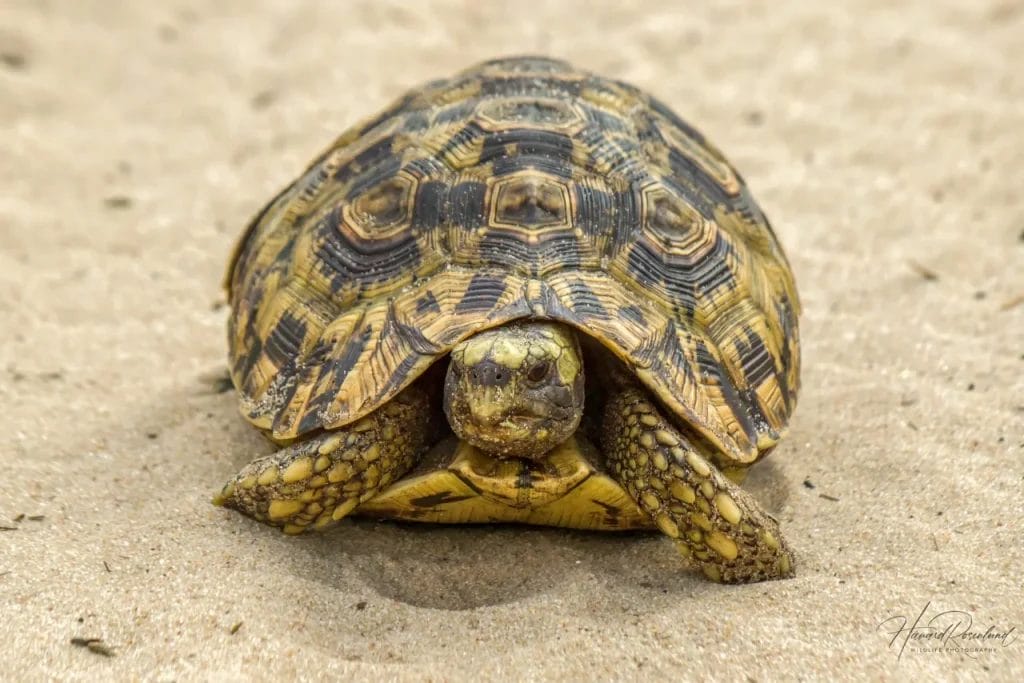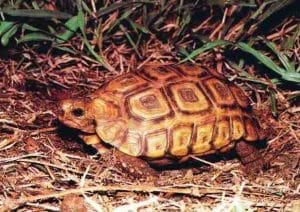Kinixys zombensis (Eastern Hinged-Back Tortoise)
Home > Turtle Database > Kinixys zombensis (Eastern Hinged-Back Tortoise)

The Eastern Hinged-Back Tortoise (Kinixys zombensis) is a medium-sized tortoise native to parts of Eastern and Southern Africa. Known for its unique hinged shell that allows it to protect its hind limbs and tail, this species exhibits fascinating adaptations to its environment.
Native To These Regions
Democratic Republic of the Congo, Eswatini, Malawi, Mozambique, South Africa, Tanzania, Zambia, ZimbabweNative Turtle Species Map – Find Turtles by Region
Scientific Classification
- Kingdom: Animalia
- Phylum: Chordata
- Class: Reptilia
- Order: Testudines
- Family: Testudinidae
- Genus: Kinixys
- Species: Kinixys zombensis
Common Names
- Eastern Hinged-Back Tortoise
- Zombensis Hinged-Back Tortoise
This Hilarious Turtle Book Might Know Your Pet Better Than You Do
Let’s be real—most turtle care guides feel like reading a textbook written by a sleep-deprived zookeeper.
This one’s not that.
Told from the snarky point of view of a grumpy, judgmental turtle, 21 Turtle Truths You’ll Never Read in a Care Guide is packed with sarcasm, sass, and surprisingly useful insights.
And hey—you don’t have to commit to the whole thing just yet.
Grab 2 free truths from the ebook and get a taste of what your turtle really thinks about your setup, your food choices, and that weird plastic palm tree.
It’s funny, it’s honest, and if you’ve ever owned a turtle who glares at you like you’re the problem—you’ll feel seen.
Identification
Description
The Eastern Hinged-Back Tortoise typically reaches a carapace length of up to 22 centimeters. It has a domed shell with a distinctive hinge at the rear, allowing it to close the back part of its shell for protection. The carapace is usually brown to olive in color with darker markings. Its limbs are sturdy, and it has a pointed snout.
Sexual Dimorphism
Males generally have longer, thicker tails and a more concave plastron (the underside of the shell) compared to females, which aids in mating. Females tend to be slightly larger with a flatter plastron.
Check more turtles from the Kinixys genus
Native Origin and Distribution
Geographical Range
This species is found in Eastern and Southern Africa, including countries like Mozambique, Zimbabwe, South Africa, Malawi, and Tanzania.
Preferred Habitat
The Eastern Hinged-Back Tortoise inhabits a variety of environments such as savannas, woodlands, and grasslands. It prefers areas with moderate humidity and access to shelter like shrubs, leaf litter, or burrows.
Behavior
Feeding Habits
An omnivorous species, it feeds on a diet that includes grasses, fruits, fungi, insects, and small invertebrates. It forages mainly during cooler parts of the day.
Predators
Natural predators include birds of prey, mammals like mongooses, and humans who may hunt them for food or capture them for the pet trade.
Reproduction
Breeding Season
The breeding season typically occurs during the rainy season when resources are abundant, enhancing the survival rate of the offspring.
Reproductive Method
Females lay a clutch of 2-6 eggs in nests dug into the soil. The eggs incubate for several months before hatching, and the hatchlings are independent from birth.
Conservation
Extinction Status
Kinixys zombensis is listed as Least Concern on the IUCN Red List.
Threats
Major threats include habitat loss due to agriculture and urbanization, poaching for the pet trade, and local consumption.
Conservation Measures
Conservation efforts involve habitat protection, regulation of trade through CITES (Convention on International Trade in Endangered Species of Wild Fauna and Flora), and breeding programs in captivity.
Economic Importance
The Eastern Hinged-Back Tortoise holds economic value in the pet trade due to its unique appearance. It may also play a role in local ecosystems as a seed disperser and in controlling insect populations.
Interesting Facts
- The hinge at the back of its shell is a unique adaptation among tortoises, allowing it to close off the rear portion of its shell for added protection.
- They are more active during cooler parts of the day, such as early morning and late afternoon.
- When threatened, they can produce a hissing sound by expelling air.

About Author
Muntaseer Rahman started keeping pet turtles back in 2013. He also owns the largest Turtle & Tortoise Facebook community in Bangladesh. These days he is mostly active on Facebook.














